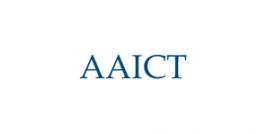Software Tool Demonstrations
Demonstrations of software tools for studying telecommunication networks will be presented during a special session of the conference.
1. Akaroa2, an automated universal controller of distributed quantitative stochastic simulation of telecommunication networks
Presenters: Krys Pawlikowski and Greg Ewing, University of Canterbury in Christchurch,
NZ Akaroa2, a fully automated and universal controller of distributed quantitative stochastic simulation, aimed at delivering accurate results from stochastic simulation by sequential analysis of simulation output data during simulation. For shortening the duration of simulation, any simulation can be automatically executed concurrently at an arbitrary number of processors that would cooperate in producing samples of output data needed in sequential analysis/estimation of the final results.
Akaroa2 incorporates the results an on-going research project of Simulation Research Group at the University of Canterbury, that is aimed at developing techniques and methodologies for automated distributed simulation, for quick and reliable performance evaluation studies of modern multimedia telecommunication networks, by employing the distributed computing power of a network of computers.The first version received an international commendation in the Science category of the Computerworld Smithsonian Award USA, as the first full scale implementation of the concept of grid processing, and its documentation is kept in archives of the Smithsonian Museum of American History in Washington D.C.
Akaroa2 is offered as freeware for non-profit research activities at universities and, during the last 12 years, it has been used by over 6000 users in over 80 countries.
2. NetML System for Analysis and Design of Networks
Presenter: Ron Addie, University of Southern Queensland, Australia
The NetML system is for research and education in the area of telecommunication networks. A key rationale of this system is that many features of modern networks (especially in the context of layered networks) are so complex that a sophisticated graphical interactive tool is required to enable students and researchers to fully understand the concepts. It includes:
- A graphical editor for networks, running in a browser
- Cloud storage of networks;
- Applications which analyse, simulate, or design networks, including:
- Loss analysis of single-layer networks, using a fixed-point algorithm (similar to the Erlang Fixed-point analysis); this includes computation of routing tables;
- Dimensioning of single-layer networks, using the loss analysis method above;
- End-to-end availability analysis of networks;
- Design of layered networks using a layered fixed-point algorithm
- First-fit allocation of wavelengths for traffic to be routed as switched individual wavelengths
- Survivable design of layered or single-layer networks, based on repeated use of of the single or multi-layer design algorithms for each failure state
- Simulation, by means of the NS3 simulation system
- Flexible display of network parameters and characteristics by colour, opacity, width, and labels.
The system has been used by 100's of users and has been in use for several years. It is available for use by anyone after a simple registration process. To be able to provide the features of the NetML system in a browser, with analysis and storage in the cloud, requires a number of innovative techniques of software development. In particular, networks are stored as XML documents in the client and the server, SVG is used to represent graphical objects in the browser, and the Google Web Toolkit is used as a software development framework for the whole project.
The system will be demonstrated and users will be able to create their own networks and analyse, design, or simulate them.



